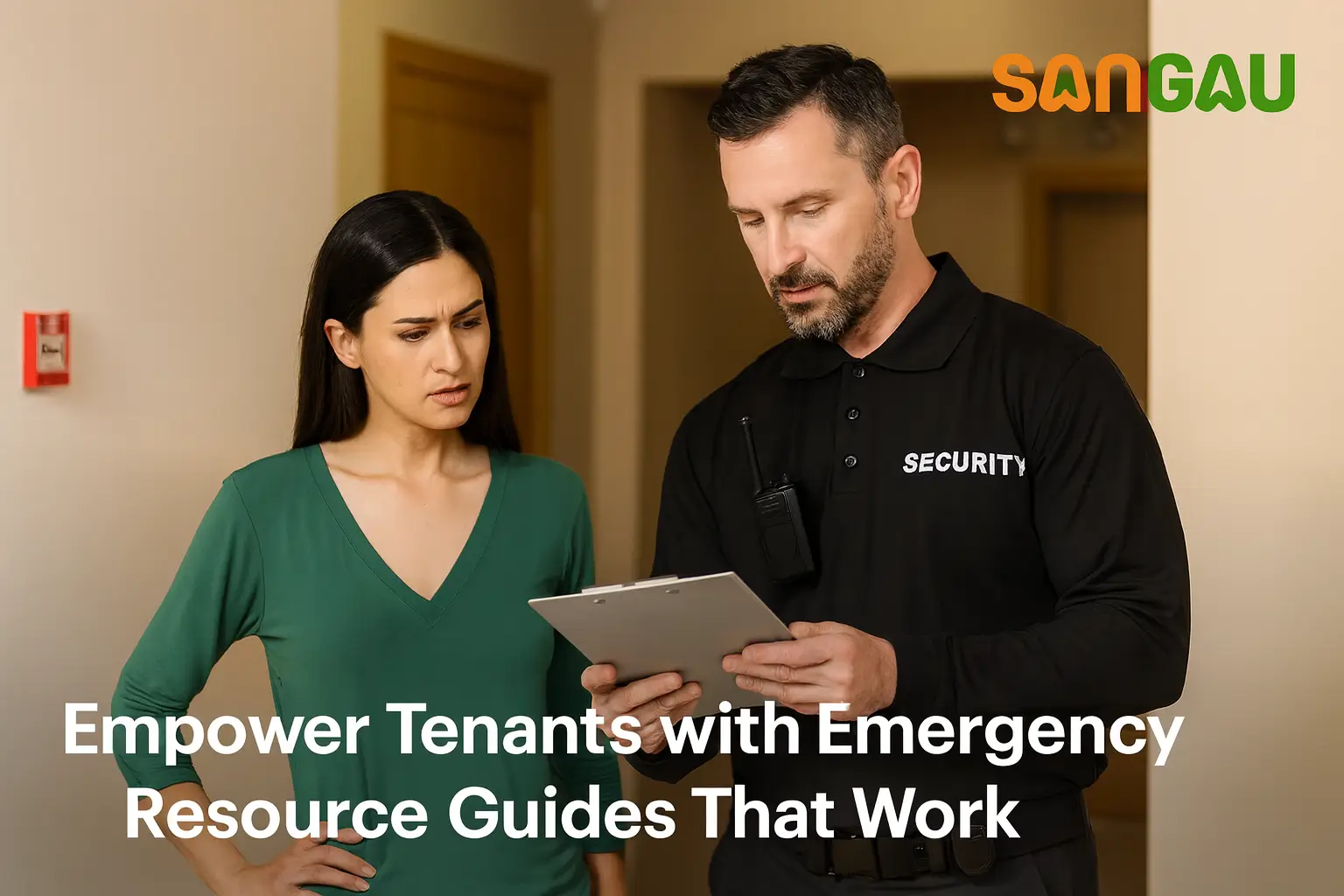Empower Tenants with Emergency Resource Guides That Work.
Published : 16 Nov 2025

Empower Tenants with Emergency Resource Guides That Work
Emergencies can strike at any moment — from natural disasters and power outages to medical crises and public health threats. As a property owner, your tenants need more than just a safe place to stay; they need reliable information and clear guidance to navigate these stressful situations effectively. A well-crafted emergency resource guide is an essential tool to support tenants, reduce confusion, and demonstrate your commitment as a responsible landlord.
In this article, we explore how to create comprehensive, easy-to-follow emergency guides that build tenant trust, enhance preparedness, and foster a safer rental environment.
Why Emergency Resource Guides Matter for Rentals
Emergency resource guides are vital for tenants when unforeseen events occur. These guides provide clear, step-by-step instructions and important contact details that tenants can use during high-pressure incidents such as fires, medical emergencies, or natural calamities.
With proper guidance, tenants can respond calmly and swiftly, improving overall safety and cooperation. Furthermore, well-informed tenants respect your management efforts and emergency protocols, enabling more efficient crisis resolution. Offering such guides signals your proactive stance as a dependable property manager.
Recognising Localised Emergency Risks
Every location comes with its own set of vulnerabilities. For instance, in Bengaluru, common challenges include heavy rains, power blackouts, and traffic disruptions. Some areas may be prone to flooding, while others may face communication difficulties during emergencies.
Tailoring your emergency guide to the specific risks of your property’s location makes it practical and relevant, rather than generic. This localisation shows tenants that you understand their environment and prioritise their safety accordingly.
Listing Critical Emergency Contacts
No emergency guide is complete without a concise, up-to-date list of key contacts. Start with emergency services such as police, ambulance, and fire departments. Include local utilities like BESCOM (electricity), BWSSB (water), and property maintenance teams. Also add nearby hospitals, pharmacies, and alternative contacts for use if primary numbers are unreachable.
Regularly updating this contact list is crucial to avoid tenants wasting precious time in a crisis trying to find help.
Clear Instructions for Common Emergencies
Provide tenants with straightforward, step-by-step procedures for likely emergencies. For example, specify evacuation routes in case of fire, instructions for fire extinguisher use, or immediate actions to take during a health emergency.
Avoid vague advice. Instead, use clear language indicating when to call emergency services and what tenants should do while waiting for help. A detailed, well-structured guide can mean the difference between chaos and calm.
Visual Layouts: Maps, Diagrams, and Exit Plans
Visual aids enhance tenant understanding during emergencies. Include building floor plans highlighting fire exits, staircases, emergency alarms, and first-aid kit locations. For multi-storey properties, provide floor-specific maps so tenants can quickly orient themselves.
Visuals also help tenants with language barriers and improve overall accessibility, making the guide inclusive.
Tackling Utility Outages with Preparedness
Power and water outages are common and disruptive. Your guide should inform tenants about safety measures, such as switching off electrical appliances, avoiding open flames, and preserving food during blackouts.
Offer practical tips for temporary solutions like bottled water and emergency lighting, and ensure utility provider contact details are clearly visible. Being prepared for these everyday emergencies keeps tenants comfortable and safe.
Guidelines for Health Emergencies and Outbreaks
Health-related emergencies, including epidemics or public health advisories, require clear protocols. Provide tenants with hygiene guidelines, isolation procedures, and information about local clinics and hospitals.
If your property has shared facilities such as gyms or lifts, explain sanitisation or usage restrictions during outbreaks. Showing concern for tenant health builds trust and ensures legal compliance.
Clarifying Tenant Roles and Property Policies
Your emergency guide should outline tenant responsibilities, such as keeping exits clear, reporting hazards promptly, and maintaining basic emergency supplies. Equally important is clarifying your role as landlord — your availability, expected response times, and temporary emergency measures.
When both parties understand their roles, emergency coordination becomes seamless and effective.
Offering Easy and Inclusive Access to the Guide
An emergency guide’s usefulness depends on accessibility. Provide printed copies in tenant welcome kits and post summaries in common areas. Digitally distribute the guide via email, tenant portals, or property management apps.
For diverse tenant populations, consider translations into multiple languages to ensure full comprehension. Accessible guides ensure every tenant is informed and prepared.
Regularly Updating and Refining the Guide
Emergency preparedness is ongoing. Review and update your guide at least twice a year to keep information current, especially after changes in emergency procedures, utility providers, or surrounding infrastructure.
Gather tenant feedback following any incident to improve the guide’s effectiveness. Continuous refinement builds a culture of safety and cooperation.
Bonus Tip: How SANGAU Ensures Emergency Preparedness for Your Property
At SANGAU, we do more than manage your rental property — we help protect it. Our team works closely with property owners to design customised emergency resource guides tailored to property layout, tenant demographics, and local risks.
From multilingual support and updated contact lists to detailed floor plans and digital accessibility, our solutions provide comprehensive coverage. With SANGAU, your tenants feel supported, your property stays secure, and your role as landlord is strengthened. We keep you one step ahead in tenant safety and crisis readiness.
Stay Prepared, Stay Connected
Thank you for reading! If you found this guide helpful, please share it with fellow property owners and connect with us for more practical property management insights. Together, let’s create safer rental communities.
#EmergencyPreparedness #PropertyManagement #TenantSafety #RentalTips #SANGAU


